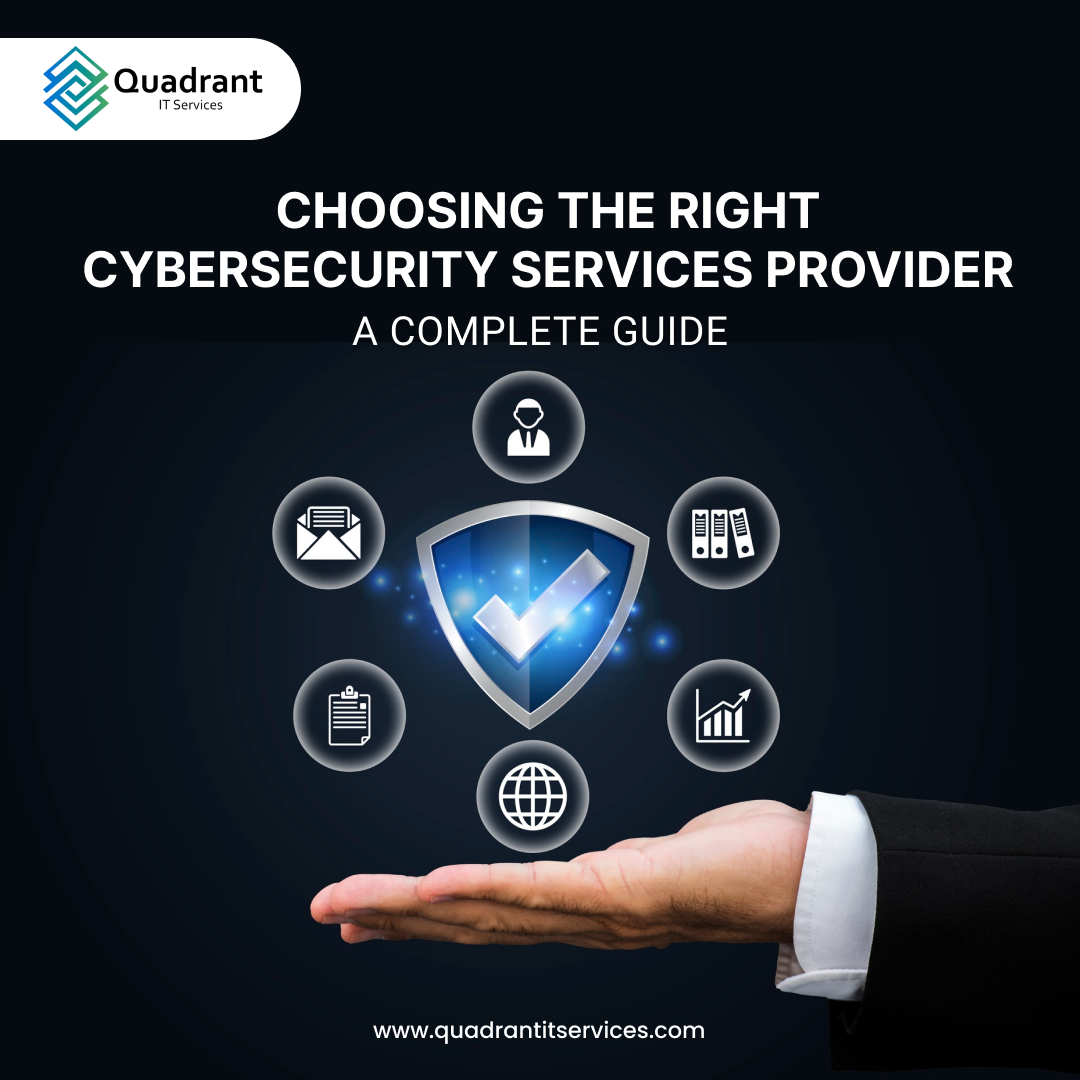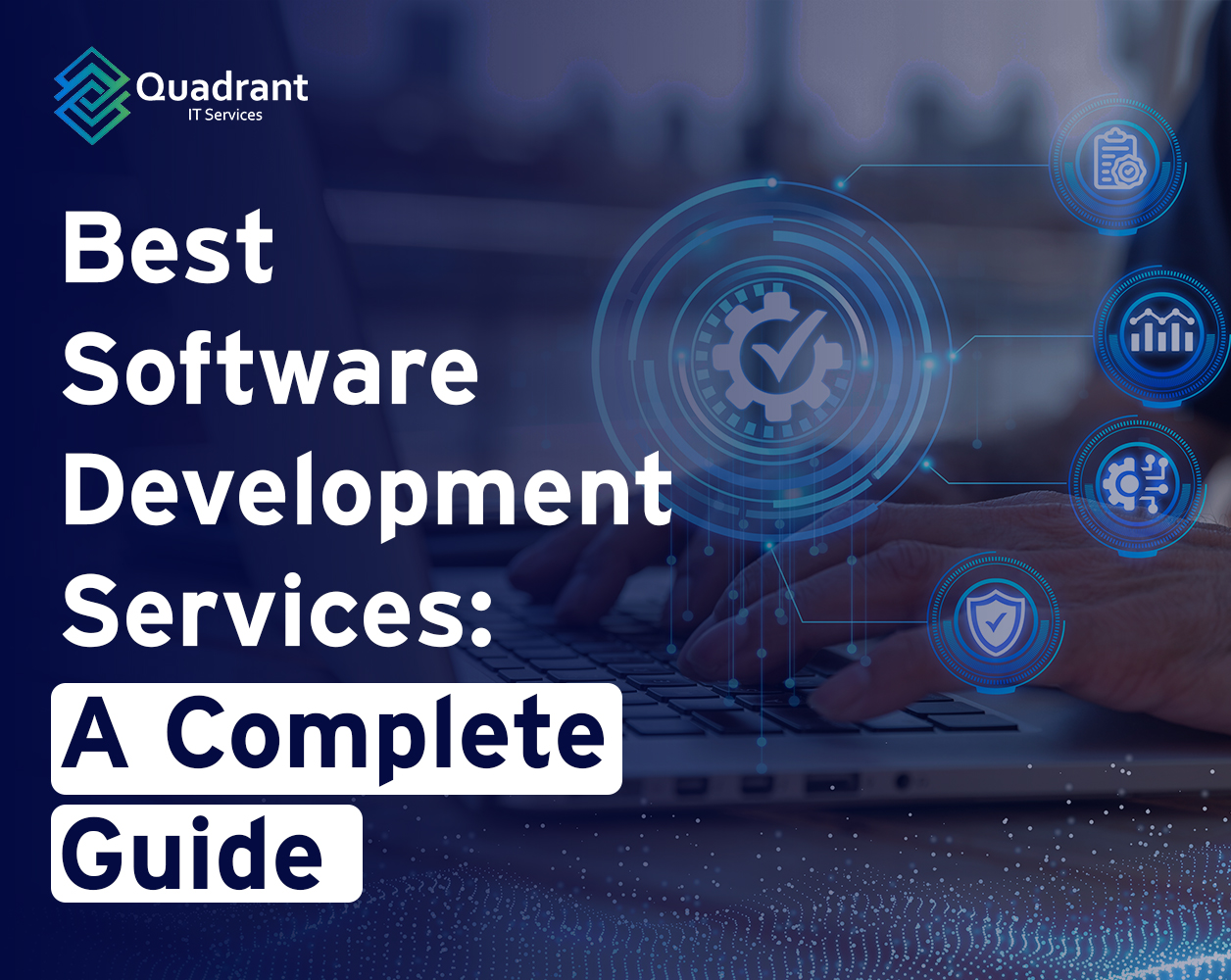Choosing the Right Cybersecurity Services Provider: A Complete Guide
We all know that organizations across the globe are vulnerable to a growing number of cyber threats. As companies continue to embrace digital transformation, the need for robust cybersecurity becomes paramount. In 2023 alone, there were over 2,200 cyberattacks reported every day, which translates to one cyberattack every 39 seconds. This shows that no business is immune from a cyberattack, and everyone is at risk.
To defend against these attacks, we must be ready with cutting-edge cybersecurity technologies. This is where cybersecurity service providers come to the rescue. This article will serve as a guide to choosing the right cybersecurity services provider, ensuring your organization is well-equipped to tackle the evolving threat landscape. Firstly, let us understand the general cyber threats faced by the companies.
Common Cybersecurity Threats Faced by Companies Worldwide
Businesses today face a variety of cyber threats that can compromise sensitive data, disrupt operations, and result in significant financial loss. Some of the most common threats include:
- Phishing Attacks: Fraudulent attempts to obtain sensitive information such as usernames, passwords, or credit card details by pretending to be a trustworthy entity.
- Ransomware: A type of malicious software that blocks access to a system or data, demanding a ransom for its release.
- Data breaches: unauthorized access to confidential information, often resulting in sensitive data being stolen or exposed.
- Distributed Denial of Service (DDoS) Attacks: Attackers overwhelm a system, server, or network with excessive traffic, rendering it unusable.
- Insider Threats: employees or third-party contractors who intentionally or unintentionally compromise the security of the organization.
The Cost of No Cybersecurity vs. With Cybersecurity: A User Case
Let’s imagine a mid-sized retail company, “RetailPro,” which handles a significant amount of customer data, including payment information.
- Without Cybersecurity: RetailPro does not have robust cybersecurity protocols in place. One day, they become the target of a ransomware attack. The attackers encrypt all their customer data and demand a hefty ransom for its release. In panic, RetailPro attempts to negotiate with the attackers, leading to loss of data, severe business interruption, and reputational damage. Customers lose trust in the brand, leading to a sharp decline in sales.
- With Cybersecurity: Now imagine if RetailPro had invested in cybersecurity services. In this scenario, RetailPro has an advanced firewall, endpoint protection, and employee awareness training in place. The ransomware attempt is quickly detected, isolated, and blocked before it can encrypt any data. The company continues its operations with minimal disruption, and customer data remains secure. With the help of cybersecurity professionals, RetailPro can review and strengthen its defenses to ensure future threats are mitigated.
The lesson here is clear: businesses with strong cybersecurity protocols are far better positioned to protect their data and mitigate risk, ensuring long-term operational continuity and trust.
What Are Cybersecurity Services?
Cybersecurity services encompass a wide range of practices, technologies, and strategies designed to protect systems, networks, and data from cyberattacks. These services can be proactive (preventative measures) or reactive (responding to an attack). Some key cybersecurity services include:
- Threat intelligence: continuous monitoring of potential threats and vulnerabilities in the network.
- Firewall and Network Protection: Safeguarding systems from unauthorized access.
- Data Encryption: protecting sensitive data through encryption so that even if data is intercepted, it cannot be accessed.
- Endpoint Protection: Ensuring that devices such as laptops, desktops, and mobile devices are secure.
- Incident Response: Having a clear plan in place to quickly detect, mitigate, and recover from a cyberattack.
- Penetration Testing: Simulating cyberattacks to identify weaknesses and vulnerabilities in your security system.
Common Cybersecurity Threats and Attacks
In addition to the threats mentioned above, businesses face other sophisticated types of cyberattacks:
- Malware: malicious software designed to disrupt, damage, or gain unauthorized access to a computer system.
- SQL Injection: Attackers use malicious SQL statements to control a web application’s database, stealing sensitive data.
- Man-in-the-Middle (MitM) Attacks: hackers intercept and modify communication between two parties without their knowledge.
- Advanced Persistent Threats (APTs): Long-term targeted attacks in which a hacker gains access to a network and remains undetected for an extended period.
How to Protect Your Organization from Cyberthreats?
To safeguard your organization against these threats, here are some best practices:
- Implement multi-layered security: Use multiple security layers like firewalls, intrusion detection systems, and anti-virus software to block cyberattacks.
- Regular Security Audits: Conduct periodic vulnerability assessments and security audits to find and address weaknesses in your network.
- Employee Training: Educate employees on cybersecurity best practices, such as recognizing phishing emails and using strong passwords.
- Backup Critical Data: Regularly back up critical data and ensure it’s stored in a secure, offsite location.
- Access Control: Implement strict access controls to ensure only authorized personnel can access sensitive data and systems.
What is a cybersecurity services provider?
A cybersecurity services provider is a company or team of experts specializing in offering security services to protect organizations from cyber threats. These providers help businesses design and implement security strategies, monitor for threats, and respond quickly to any incidents that occur. Services provided by cybersecurity providers can include anything from setting up firewalls, providing 24/7 network monitoring, and developing security policies to handling incident responses and performing penetration tests.
How to Choose the Right Cybersecurity Services Provider?
Choosing the right cybersecurity services provider is critical to ensuring your business is well protected. Here’s a detailed breakdown of key factors to consider:
- Assess Your Needs: Start by understanding your specific cybersecurity needs. Are you looking for a comprehensive security overhaul, or do you need help with a specific area such as threat monitoring or endpoint protection? Having a clear understanding of your needs will help you identify providers that specialize in those areas.
- Industry Experience: Look for a cybersecurity provider with experience in your industry. Cybersecurity needs vary across sectors — what works for a financial institution may not work for a healthcare provider. A provider with industry-specific experience will understand the unique challenges you face and can offer tailored solutions.
- Range of Services: Ensure the provider offers a wide range of services that cover all aspects of cybersecurity. This could include network security, cloud security, application security, threat intelligence, compliance management, and more. The broader their service offerings, the more likely they are to meet your evolving needs.
- Reputation and References: Check the provider’s reputation by looking at client reviews, case studies, and testimonials. Ask for references and speak directly with other businesses that have used their services to get an honest perspective on their performance.
- Certifications and Accreditations: Look for providers with relevant industry certifications, such as Certified Information Systems Security Professional (CISSP) or Certified Ethical Hacker (CEH). These certifications demonstrate that the provider adheres to industry standards and best practices.
- 24/7 Monitoring and Support: Cyber threats don’t follow a 9-to-5 schedule, and neither should your cybersecurity provider. Make sure they offer round-the-clock monitoring and support to address incidents whenever they arise.
- Incident Response Capability: Check the provider’s incident response capabilities. Do they have a well-defined response plan for dealing with cyberattacks? How quickly can they respond to a security breach, and what steps will they take to mitigate the damage?
- Customization and Flexibility: Every business is unique, and so are its cybersecurity needs. The right provider should offer customized solutions that fit your specific requirements, rather than offering a one-size-fits-all approach.
- Cost and ROI: While cybersecurity is an investment, it’s important to consider the costs involved. Evaluate what services are included in the pricing, and whether the provider can offer a scalable solution that grows with your business. A cost-effective provider will deliver strong ROI by preventing costly security breaches and downtime.
- Partnership Approach: A good cybersecurity provider should act as a partner, not just a vendor. They should work closely with you to understand your goals and challenges, offering strategic advice on how to continuously improve your security posture.
In an era where cyber threats are more prevalent than ever, choosing the right cybersecurity services provider is essential to safeguarding your organization’s assets, data, and reputation. By considering factors such as industry experience, range of services, certifications, and 24/7 support, you can find a provider that aligns with your security needs and helps you stay ahead of potential threats.
Investing in a reliable cybersecurity partner not only secures your business but also fosters trust with customers and stakeholders, ensuring long-term success in an increasingly digital world.








